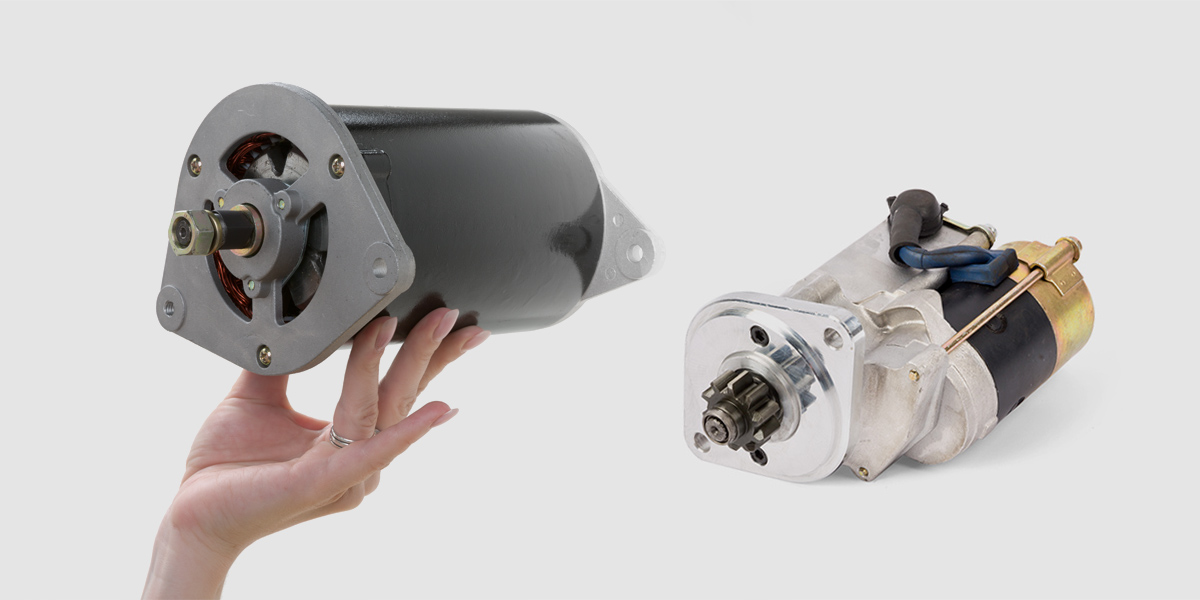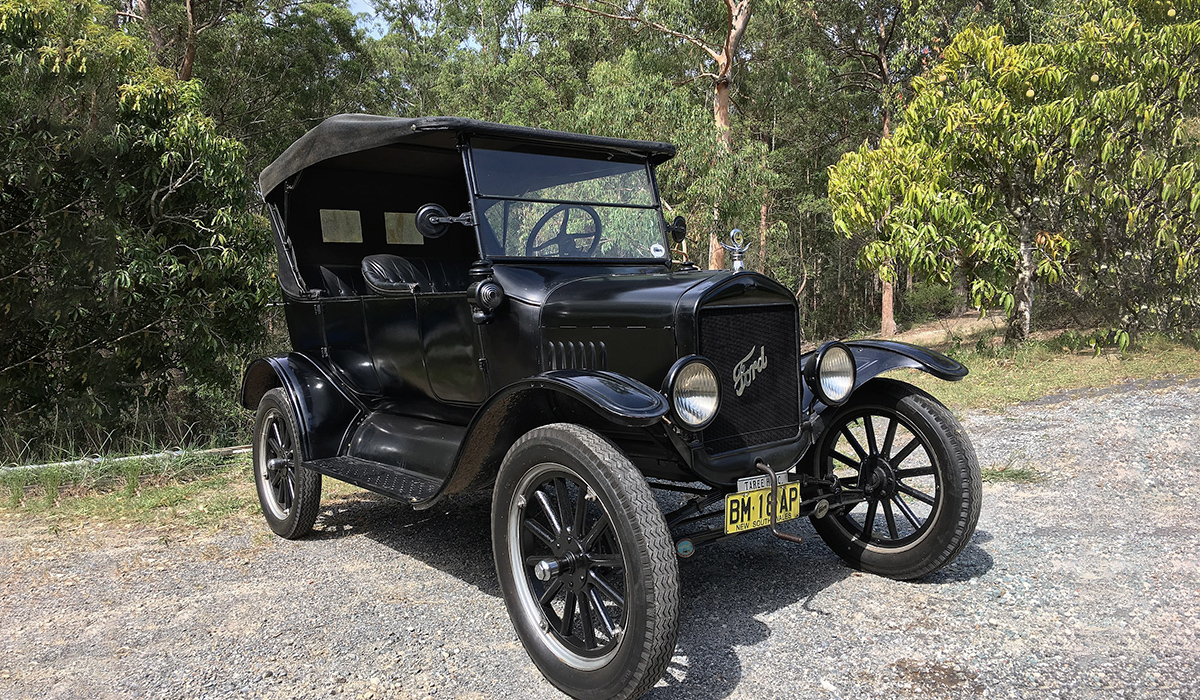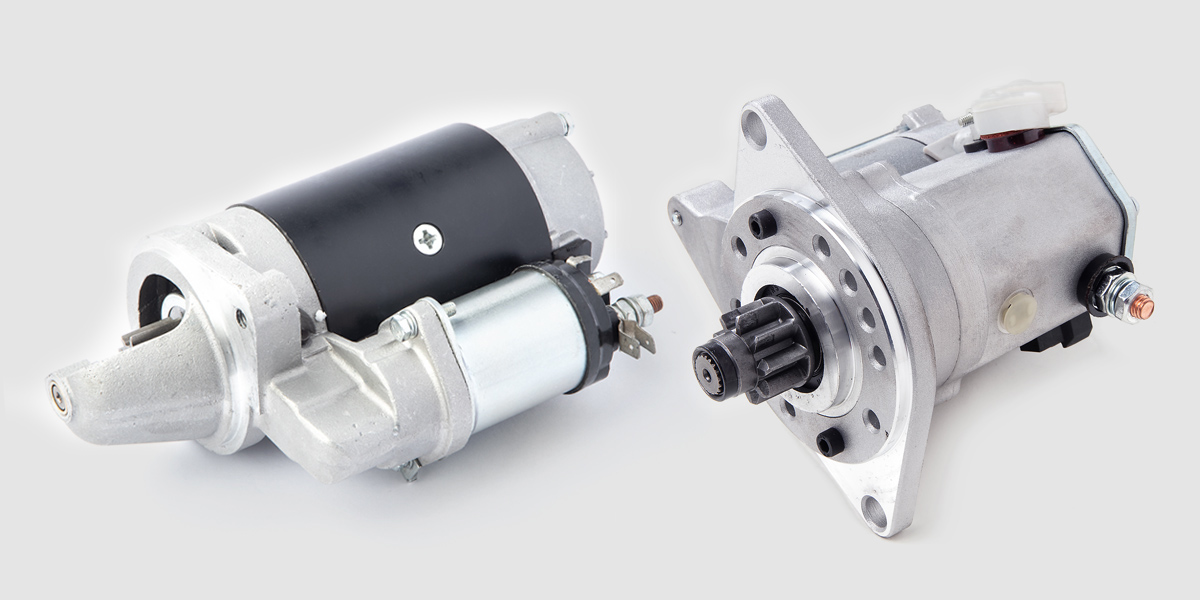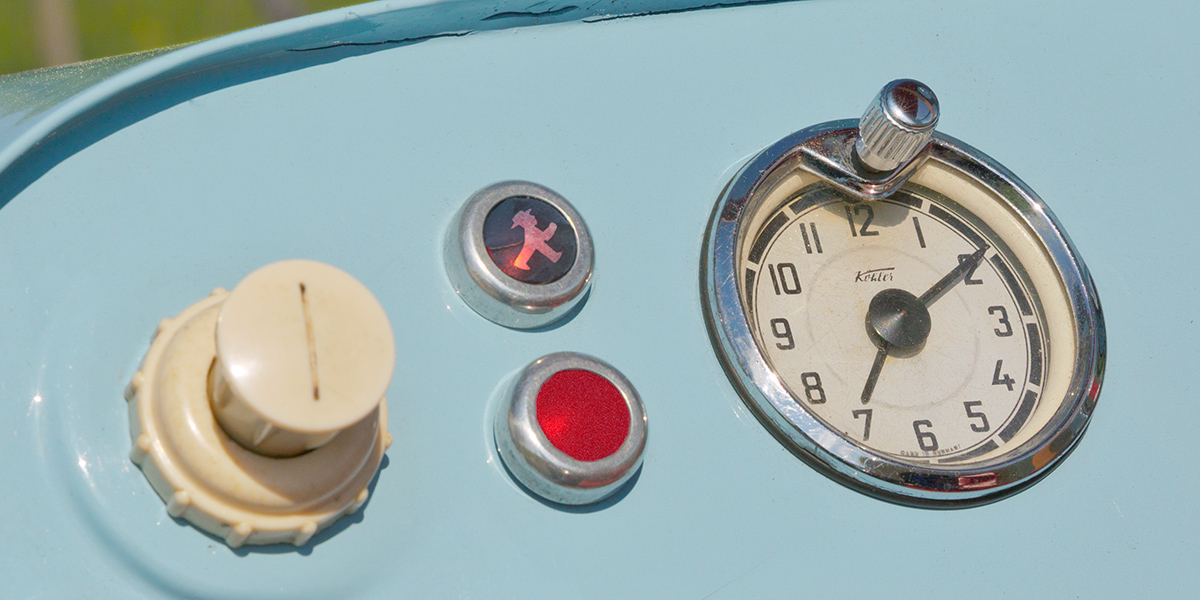Oldtimer: repairing the starter - tips and tools
In many cases it helps to be able to classify the damage: Which component is no longer working and how can you help yourself and repair the starter? You will find this information in the following article, and we will also advise you on alternator repairs.

Autor: Max Berger
Posición: Venta
Actualizado: 20.10.2023

Starter and alternator: the backbone of the
electrical system
The starter and alternator are two different components that serve different very important functions. The alternator generates the electricity for the lighting and ignition.
The starter motor, switched by the magnetic switch, rotates the crankshaft of the engine via the flywheel. The rotating crankshaft draws in a mixture of fuel and air, the ignition distributor, which is driven by the crankshaft, ensures the right spark at the right time, the engine starts. When the engine starts, the starter engages again.
The starter is an electric motor that needs a well-charged battery. Turning the car key in the ignition lock attracts the magnetic switch. The magnetic switch engages the starter with the flywheel and starts the starter motor. When the starter rotates and the mixture and ignition are right, the engine also starts.
- In 1911 the first electric starter was installed in a car, before that the car had to be cranked by hand, what was a dangerous undertaking.
- Up until the early 1950s, starting cranks were common on many European-made vehicles. In France, many vehicles were equipped with starting cranks up until the 1980s.

The alternator is dependent on the running engine for its function. It is a generator that is driven by the engine using a belt. The motor drives the generator via this. The alternator charges the starter battery with electricity and supplies the energy for the electrical consumers in the vehicle.
- Since the 1970s, the three-phase generator enforced as an alternator. One speaks of alternators.
- The DC dynamos previously used were less powerful and did not supply enough energy to charge the vehicle battery at idle speed.
Oldtimer: repairing the starter - things worth knowing about
the starting process
If the starter seems to be defective but the battery has enough juice for the ignition, then you can push the car to get the engine to start. This is exhausting without other helping hands, so you should rather take a close look at the starting process as a whole.
What happens when the engine starts and how do we determine whether the starter is actually defective?
Almost all components of the vehicle are involved in starting the engine. The ignition key switches on the ignition, further turning activates the starter relay. This activates the magnetic switch, the starter engages and rotates. If the starter turns but the engine won't start, there is an ignition or fuel supply problem. Check any kill switches and electric fuel pumps.
A defective starter, or a problem with the assemblies mentioned above, can be inferred from any missing noises:
- If the starter rotates slowly or the indicator lights become extremely weak, the battery no longer has enough power. loading helps.
- If the starter (or its magnetic switch) only makes a mechanical click or no noise at all, then this means that the damage is to be found here.
- If the starter only clicks, it is usually the magnetic switch that you can hear. As described above, the function of the magnetic switch is to switch the current to the starter motor and engage the starter with the ring gear on the flywheel.
If the magnetic switch clicks, you can often get the starter to start working with a targeted hit on the magnetic switch. However, this is not a repair, but a short-term reactivation of a worn component.
A good Tip that actually works: Lightly hit the starter with a hammer tap, a few times, to free any stuck teeth or sticky switches. The starter in cars is located on the side of the engine, always near the interface between the engine and transmission. In many classic vehicles, it is best reached from below.
- A loud squeak after starting is also an indication of wear or an impending defect. This loud harsh noise occurs when the starter does not mesh properly with the flywheel ring gear.
This unclean meshing can be remedied inexpensively by replacing or overhauling the starter clutch. If this does not happen, the starter pinion will destroy the ring gear on the flywheel. The result is a very complex repair, for which at least the gearbox has to come out.
What to do if the starter is broken? Push!
If the starter is broken, the engine can easily be started by pushing the vehicle, provided there is enough electricity for the ignition. This is easier for small displacement vehicles, more difficult for heavy vehicles.
- Start in second gear
- Position of the key on the ignition (indicator lights are on)
- only for cars with manual transmission
- only for petrol engines
- not for cars with a catalytic converter (KAT)
Tip: Cars with a defective starter always park on a slope. Tightening with a second vehicle is also possible, but needs someone who really knows how to do this.
- Set the car in motion, i.e. push it or let it roll.
- Activate ignition (and choke)
- Step speed is sufficient
- Quick: get in
- Engage clutch, engage second gear, let clutch come up quickly
- Disengage clutch, bring engine up to speed with bursts of throttle.
However, if in addition to the starter, the ignition switch is also causing problems, you won't get ignition or free steering wheel and will have to have the car towed. If the battery is too weak, a jump starter or jump start using a jumper cable will help.
What can be the causes of the defect?
Often the root of the problem lies in the mechanics of the starter. Like every mechanical component, there are a number of wearing parts in the starter that no longer perform their function reliably after a few years. Especially for vintage starters, you should take a close look at the classic car so that you can see the wear before the collector's vehicle has to be pushed.
The wearing parts include bearings and carbon brushes as well as the magnetic switch as a whole. The other components:
- Starter clutch and pinion
- Anchor with slip rings
- Housing cover
- Housings with magnets
Of course, this does not apply to beginners, but if you have some experience working on the car and its components and understand something about the mechanics, then nothing stands in the way of the starter overhaul.
Oldtimers: overhauling the starter - tools and tips
In principle, it makes sense to install a new or factory-overhauled starter. As a driver of a classic vehicle, you should consider whether it might not be better to use a modern high-performance starter to assemble.
These starter motors start at lower current, rev higher and more powerful. This considerably simplifies starting the engine, especially under sub-optimal conditions.

DC starter
vs. modern high power starter
An overhaul is a slightly more involved task. To do this, the mechanical components, i.e. bearings and drives, must be checked and replaced if necessary. With the electrical components, turning off the contact surfaces and changing the carbons is often sufficient.
Caution: Never leave the vehicle running without a battery and under no circumstances remove the battery while the engine is running.
Here are some tips for work on the starter:
- Check the voltage of the battery - the battery is also a possible source of error
- Disconnect the battery properly - first the earth pole, then the live pole
- To be on the safe side, take photos of the cables and connectors during assembly
- Clean the component - remove any dust and dirt in the gaps and on the brackets
- Are the teeth on the ring gear of the flywheel ok? Or are the teeth already eaten at the corners?
- Check all cable connections and cable lugs
- Are all screws in good condition? Are they oxidized or their heads choked up?
- a powerful multimeter
- standard tooling: articulated ratchet case, Wrench according to technical requirements: Metric or imperial. Screwdriver. Locksmith's hammers. Different pullers are required to disassemble the starter.
Car won't start - what's the problem? Maybe the starter motor?
Find information about engine starting and starter motors on our Youtube channel!
Oldtimer: alternator, the most common errors and remedies
The alternator supplies the car with electricity. It is driven by the engine via a V-belt, without which the car would drain the battery very quickly. The car can also be driven without an alternator. If you switch off the electrical consumers, a well-charged battery is enough for hundreds of kilometers of ignition.
If the alternator breaks, if it no longer has any charging power, a red charging indicator light will come on in the speedometer, but the engine will continue to run. The indicator light is labeled differently for different manufacturers, but it is the same light, which goes out with a slight delay after the engine starts.

- Before you narrow the problem down to the alternator you should also examine the V-belt. If this is not tightened properly, then it will not serve its purpose and must be tightened. A torn V-belt must be replaced.
- A tip: Always put a suitable V-belt in the car. A new V-belt costs only a few euros and helps to get your car running again and again. It's easier to find a mechanic on a Sunday than a belt for the '56 Fiat Millecento.
As for the repair or overhaul of the alternator, we recommend leave this to professionals. When the alternator (LiMa) is overhauled, each individual component is checked and cleaned.
All wearing parts - bearings, bushings and brushes - are completely renewed, as are the field and armature windings.
Then the overhauled alternator is subjected to a function test. Most alternators are also offered in exchange. In this way, you get a perfectly refurbished aggregate directly, without having to wait.
Important: Should If the alternator is defective and needs to be replaced, we recommend thoroughly investigating what caused the alternator to fail. If the controller or other components of the electrical system are defective and thus caused the defect in the old alternator, the new alternator is also quickly grilled. Warranties are void if the alternator malfunction can be traced back to a defective or old regulator.
Some DC alternators need to be polarized before they are put into service for the first time. After the overhaul, the field winding (external, non-rotating) must be magnetized. This is not possible during the overhaul because it is not yet known at the time of overhaul in which car the alternator will be installed, whether with plus earth or with negative earth.
- Alternators from German or Italian manufacturers, where the polarization problem does not occur because the vehicles always had negative ground, are polarized ex works.
- If the If the car's electrical system is polarized to "Positive Earth" (plus ground), then the alternator must be polarized before operation.
Alternator repair - polarization of the overhauled alternator
- Install the alternator without connecting a cable and without tension the V-belt. The V-belt should be able to be compressed by about 10 mm between the two belt pulleys.
- Then determine which terminal of the battery is not connected to the vehicle earth (for "Negative Earth" vehicles this is the positive pole, with “Positive Earth” vehicles this is the negative pole). Now take a cable and connect one end of the cable to the battery pole that is not connected to the vehicle ground.
- Now hold the other end of the cable for maximum 3 up to 5 seconds to the field winding connection of the alternator. This is usually the smaller connection (terminal F).
- After this process, the alternator is polarized. Now remove the "auxiliary cable" and professionally connect the alternator to the vehicle electrics.
Please note that the alternator is not solely responsible for generating electricity in the vehicle. In the event of a defect, please also check the alternator regulator and the rest of the electrical system.
Conclusion: Repair vintage starters
The starter of a car is an essential component that can break down due to wear and tear. With a little experience and skill, the starter can be repaired yourself - this saves several hundred euros. The overhaul of the alternator is a bit more complex and should be left to professionals, no mistake should be made with the polarization. A proper and conscientious overhaul of the components ensures smooth operation of your classic.
FAQ
Here you will find the answers to the most frequently asked questions around the starter and alternator.
What are the most common signs of a defective starter?
The starter makes a mechanical click of itself but does not rotate or makes no sound at all and does not rotate. A squeaking noise after starting indicates wear - take action soon.
What could be the cause of the defect in the starter motor?
On many components such as:
- Sprocket and freewheel
- Armature shaft bearing
- Slip rings and carbon brushes
- Sliding contact surfaces
- Magnetic switch contacts
- Connections of the electrical lines
What is important when replacing/overhauling the alternator?
- If the alternator needs to be replaced, also the regulator renewed .
- If the car's electrical system is polarized to "Positive Earth" (plus ground) then the alternator must be polarized >. Which battery pole is not connected to vehicle ground?
- In the event of a defect, also check the alternator regulator and the rest of the electrical system
How much money can you save by doing the work?
This depends very much on the make and year of the car. Starters cost between 100 and 500 euros. The installation work is still to come. An alternator is also in this price segment, the costs for removal and installation vary depending on the workshop. Both alternator and starter are usually changed in 1-2 hours.